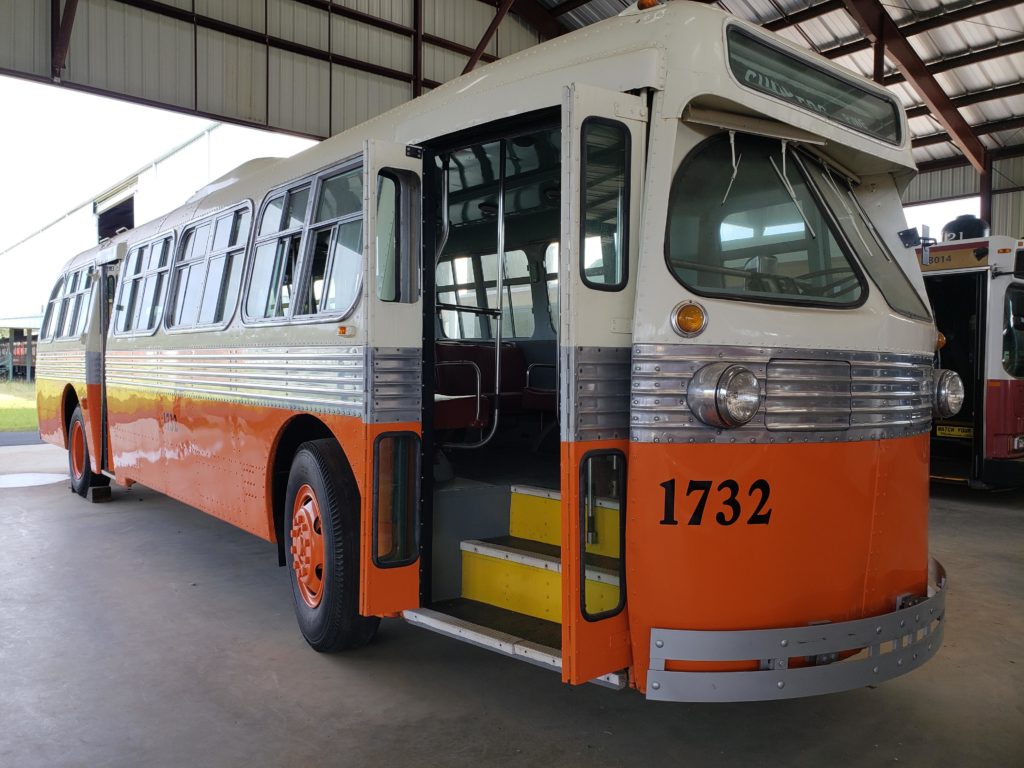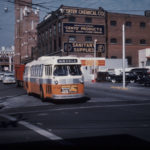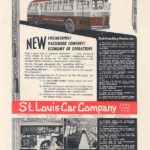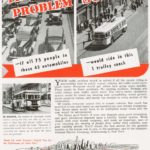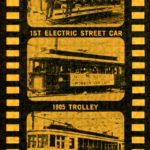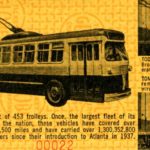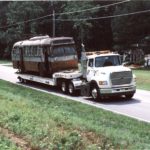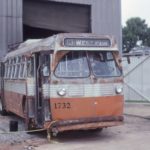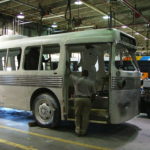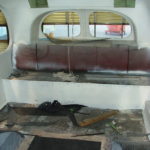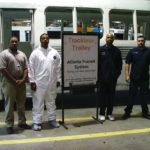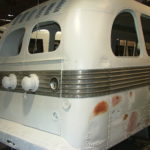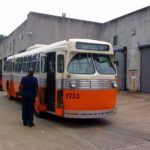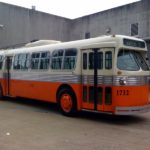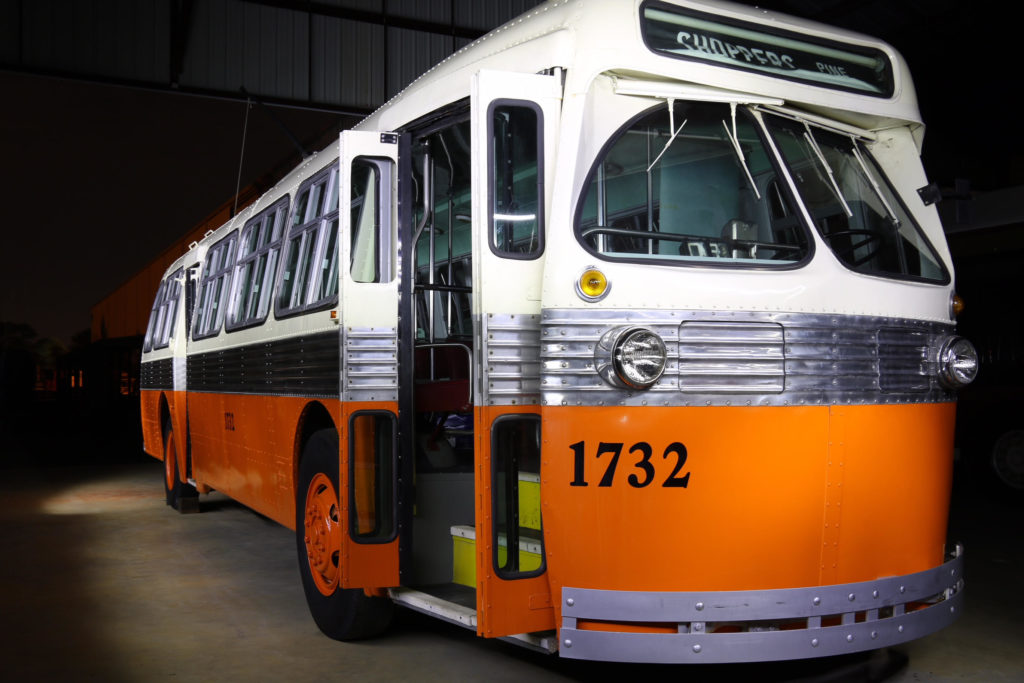Atlanta Trackless Trolley 1732
Background
In the late 1930’s, Atlanta’s streetcar system was, like many others around the county, in the red. The Georgia Railway and Power Company, predecessor to the Georgia Power Company, was looking for a way to modernize its streetcar system.
While some systems were replacing their old streetcars with more modern streetcars or with diesel or gas buses, Georgia Power had a rather unique solution to modernization.
On June 28th, 1937 the first so-called trackless trolleys hit the streets of Atlanta on route #20 from downtown to College Park, Hapeville and East Point. The increased flexibility of trackless trolleys to maneuver in traffic and provide curbside loading made them a huge success and prompted plans to convert the majority of the bus system. On August 24th, 1940 the line through Buckhead to Oglethorpe was converted to trolley coach with much fanfare.
Georgia Power planned more conversions but World War II and tire rationing put a temporary stop to that. After the war, there was a backlog of orders for transportation equipment which the various vehicle manufacturers worked hard to meet the demand, slowing the conversion process and giving the old streetcars a temporary reprieve. With order backlogs being filled, the ongoing massive conversion to trackless trolleys continued to change the streets of Atlanta forever as the streetcar tracks were removed or paved over. Finally, on April 10th, 1949 the last streetcars made their final runs on the route #19 to the Chattahoochee River and the trolley coach took over the last streetcar line.
The trackless trolley is an electric vehicle, a development of streetcar technology. It has the same electric propulsion system as a streetcar and thus it also draws its electricity from overhead wires. The difference it has rubber tires and therefore needs a second overhead wire, used as ground. A streetcar uses its steel wheel/steel rail connection as its electrical ground (negative return) thus requiring only one wire for the positive electrical feed.
A trackless trolley requires no investment in rails, a substantial infrastructure cost savings over streetcars. It uses much of the existing electrical generation and distribution infrastructure already in place for streetcars. As a unique transit company now primarily in the electricity business this allowed for the cost-effective expansion of the transit system without costly investment in track while still using electricity for power.
Georgia Power and its predecessors operated the transit system in Atlanta since 1902 and many other Georgia cities including Columbus, Rome, Athens, Macon, Marietta and others. In Atlanta, Georgia Power built and operated the largest trackless trolley network in North America. At its peak there were over 140 route miles and a fleet of 453 trackless trolleys. The Securities and Exchange Commission, concerned with shareholder conflicts of interest, was encouraging utilities such as Georgia Power to divest their transportation interests. After a particularly nasty labor strike in 1950 the system resumed service as a newly formed independent organization, the Atlanta Transit Company. Trolley Coach service lasted in Atlanta until September 1963 when the continued construction of interstate highways, associated one-way street conversions (which required tinkering with the overhead wire) caused the company to abandon the system and trade the copper wire in on new GMC diesel transit buses. In 1972 the remaining Atlanta Transit System was purchased by the new Metropolitan Atlanta Rapid Transit Authority.
Trolley Coach 1732
Trackless trolley 1732 was purchased by Georgia Power as part of a large series of post-war orders to modernize the transit system in Atlanta. #1732 was the 32nd unit of an order of 120 units by the St. Louis Car Company (job #1749, numbers #1701 – 1820). The trolleys ordered were used to replace streetcars operating in Atlanta and save Georgia Power the cost of maintaining track infrastructure while utilizing electric propulsion and adding operational flexibility through increased maneuvering ability and curbside (un-) loading.
The design of the coaches was unique to Atlanta and is the only example of the “new look” design of a trolley coach built in this country.
The network of trolley coach operation increased slowly and highway operation was even considered, but ultimately the implementation of many one-way streets throughout Atlanta construction of expanded interstate highways and intense marketing by General Motors for new diesel buses ended trolley coach service in Atlanta. On September 27th, 1963 the last regularly scheduled trolley coach services operated and Atlanta went all-diesel.
#1732 and #1756 were sold to a couple near Coal Mountain, Georgia for use as storage sheds. After their death in 1999 and subsequent sale of the property, the Southeastern Railway Museum was made aware of the trolley coaches and they were acquired in the summer of 2000. MARTA later donated and provided transportation of the trolley coaches to the Museum. In the early 2000s a dedicated crew from the MARTA Brownsmill Heavy Bus Maintenance Plant spent three years painstakingly restoring 1732. It was placed back in the Museum collection and has participated in many MARTA events and equipment displays, been displayed at the Georgia Power headquarters downtown, been in movie shoots and was prominently displayed at the American Public Transportation triennial international Expo in Atlanta in 2017 in the Georgia World Congress Center.
Technical Specifications
Builder: St. Louis Car Company
Model: TC-45
Seats: 45 (leather – American Seating)
Length: 37’ 5”
Body: Aluminum
Propulsion: Westinghouse “Electrocam”
Tires: 12R22.5 (6x)
Balancing Speed: 46mph
Rear Door Control: Treadle
Brakes: Blended dynamic/air

